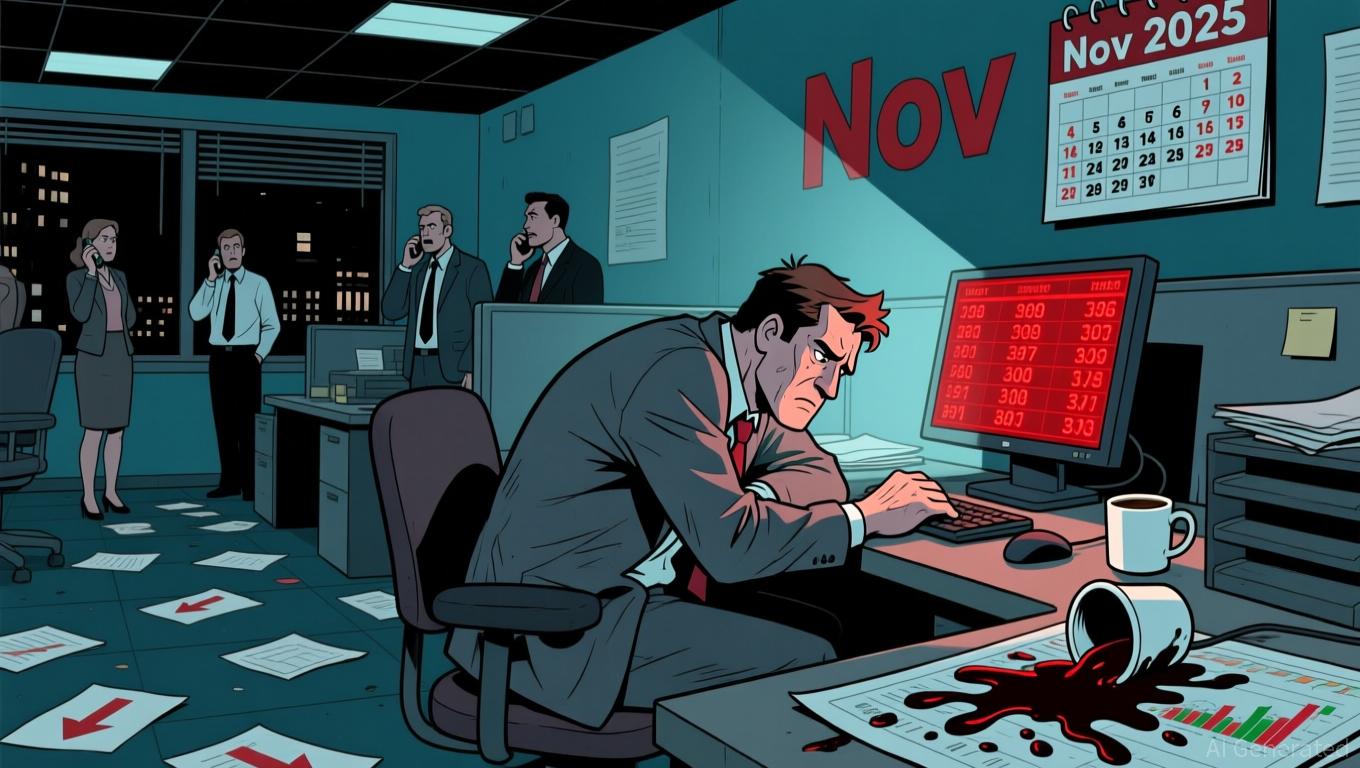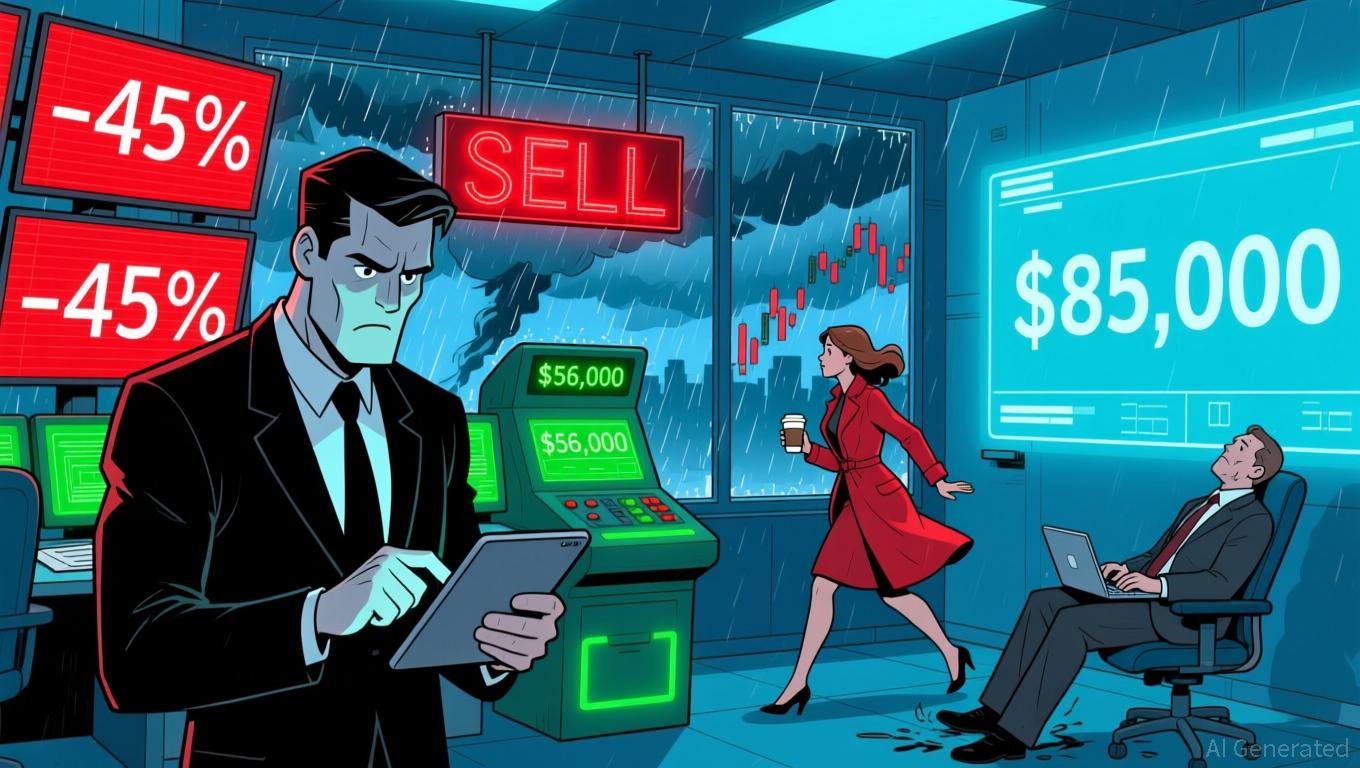Fed Faces Delicate Balancing Act: Weighing Inflation Concerns Against Labor Market Challenges in December Decision
- The Fed faces a December meeting split over rate cuts, with dissenters like Lorie Logan opposing action due to high inflation and Christopher Waller advocating easing to address labor market weakness. - Logan argues current policy balances inflation control with gradual labor market adjustments, warning against premature cuts without clear progress toward 2% inflation. - Waller supports a 25-basis-point cut, citing deteriorating hiring trends, while facing resistance from officials demanding stricter cri
The Federal Reserve is preparing for a potentially divisive meeting in December, as at least three members are anticipated to oppose a proposed interest rate cut. This internal disagreement highlights growing tensions within the central bank, with officials weighing the dangers of ongoing inflation against evidence that the job market is slowing. Dallas Fed President Lorie Logan, who has consistently opposed lowering rates, has reiterated her resistance, while Governor Christopher Waller has become a prominent supporter of additional rate reductions to bolster employment.
Logan, who will have voting power again in 2026, maintained her view that reducing rates in December would be premature. She pointed out that inflation remains elevated and appears to be rising, and although the labor market is cooling, she does not believe further stimulus is warranted at this stage.
In contrast to Logan’s caution, Waller has become an outspoken advocate for a December rate reduction, pointing to worsening conditions in the labor market. Addressing economists in London, Waller argued that "several months of declining" job growth justify another 25-basis-point cut. He
This split within the Fed underscores the challenge of balancing conflicting objectives. While some inflation indicators have eased, core measures remain persistently high. At the same time, labor market reports have been mixed, with recent hiring numbers missing forecasts. This ambiguity has left investors uncertain, closely watching which side will influence the final decision. A rate cut in December could indicate a move toward more supportive monetary policy, but opposition from dissenters may reinforce the Fed’s resolve to keep rates elevated for an extended period.
The decision will have far-reaching effects on both financial markets and the overall economy. Should the Fed choose to lower rates, it might reflect confidence in the labor market’s strength despite inflation concerns. On the other hand, maintaining current rates could validate critics like Logan, who warn that easing too soon could reignite inflation. With the central bank’s reputation at stake, the December meeting will be a crucial test of its ability to steer through a complicated economic environment.
Disclaimer: The content of this article solely reflects the author's opinion and does not represent the platform in any capacity. This article is not intended to serve as a reference for making investment decisions.
You may also like
Bitcoin News Update: MSCI Index Removal Threatens to Topple MSTR's Fragile Structure
- MSCI's potential removal of MicroStrategy (MSTR) from major indices risks triggering $8.8B in passive outflows, worsening its fragile financial position. - JPMorgan warns index exclusion would damage MSTR's valuation credibility and hinder capital raising amid Bitcoin's 30% drop and collapsing stock premium. - MSTR's reliance on high-yield preferred shares has backfired as yields rise to 11.5%, while MSCI's recalibration of float metrics sparks sector-wide uncertainty. - The January 15 decision could res

Bitcoin News Today: Bitcoin’s Sharp Drop: Is This a Mid-Cycle Adjustment or the Beginning of a Bear Market?
- Bitcoin fell below $90,000 on November 17, driven by profit-taking, shrinking liquidity, and macroeconomic pressures. - Technical indicators show oversold conditions (RSI <30), $160M in liquidated long positions, and rising whale accumulation amid 24-hour $6.08B in loss-selling. - Ethereum and XRP weakened alongside Bitcoin, with ETF outflows totaling $255M for Bitcoin and $183M for Ethereum, worsening market fragility. - Analysts suggest a mid-cycle correction rather than a full bear market, noting Bitc
Ethereum News Update: The Dangers of Leverage: Crypto Whale Suffers $26 Million Loss Amid Market Decline
- A crypto whale lost $26.348M by partially liquidating 15x leveraged BTC and 3x leveraged ETH positions amid declining prices. - The whale's $250M portfolio faces $3.734M unrealized losses if liquidated, with a $65,436 WBTC liquidation threshold. - Broader market trends show $260.66M ETH ETF outflows and ETH/BTC prices below $2,800 and $87,000, worsening leveraged traders' risks. - A HyperLiquid user lost $4.07M from a 6x ETH long position, reflecting systemic leverage challenges as macroeconomic factors

Bitcoin Updates: U.S. Market Pessimism Contrasts with Asian Confidence as Bitcoin Drops Near $85,000
- Bitcoin's price fell to $85,000 in Nov 2025, down 7% in 24 hours and 20% monthly, driven by dormant wallet sales and bearish derivatives bets. - Surging sell pressure from inactive wallets and rebalanced derivatives toward puts highlight deteriorating market structure and liquidity. - Fed rate-cut uncertainty and regional divergences—U.S. bearishness vs. Asian buying—exacerbate volatility amid $565M in liquidations. - Analysts split on recovery: some see consolidation near $85K-$100K, others warn of a po
